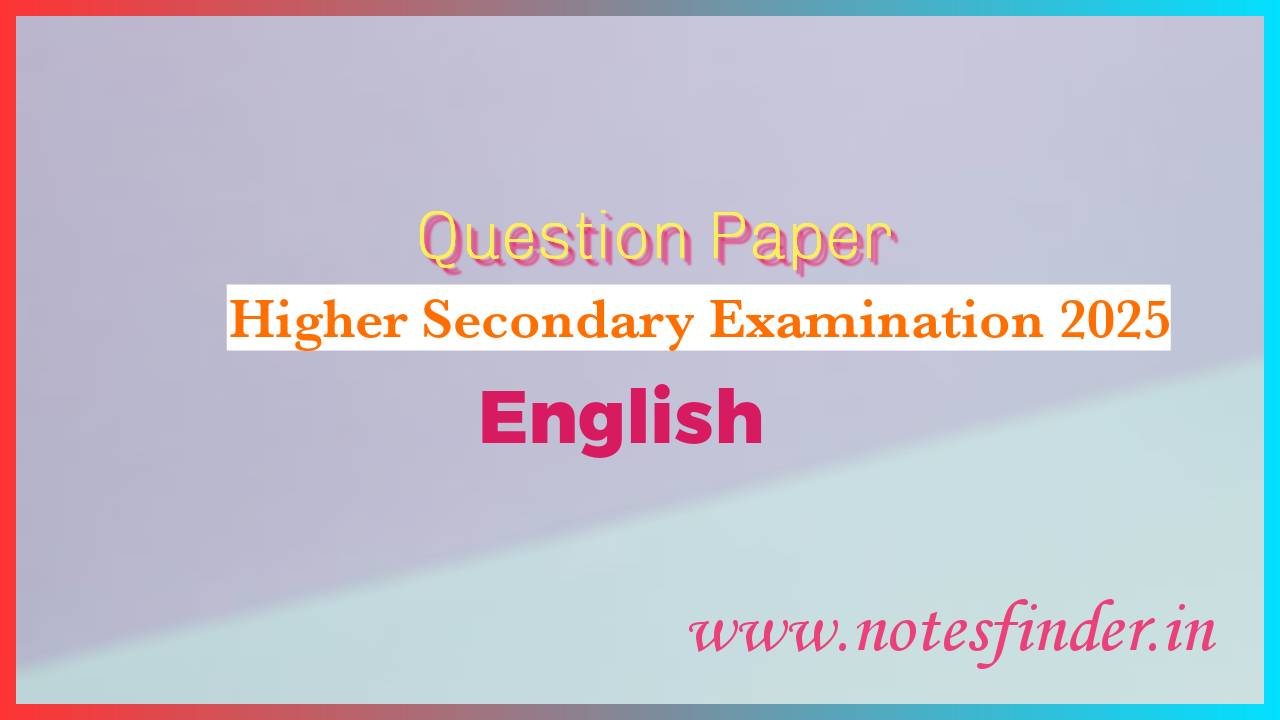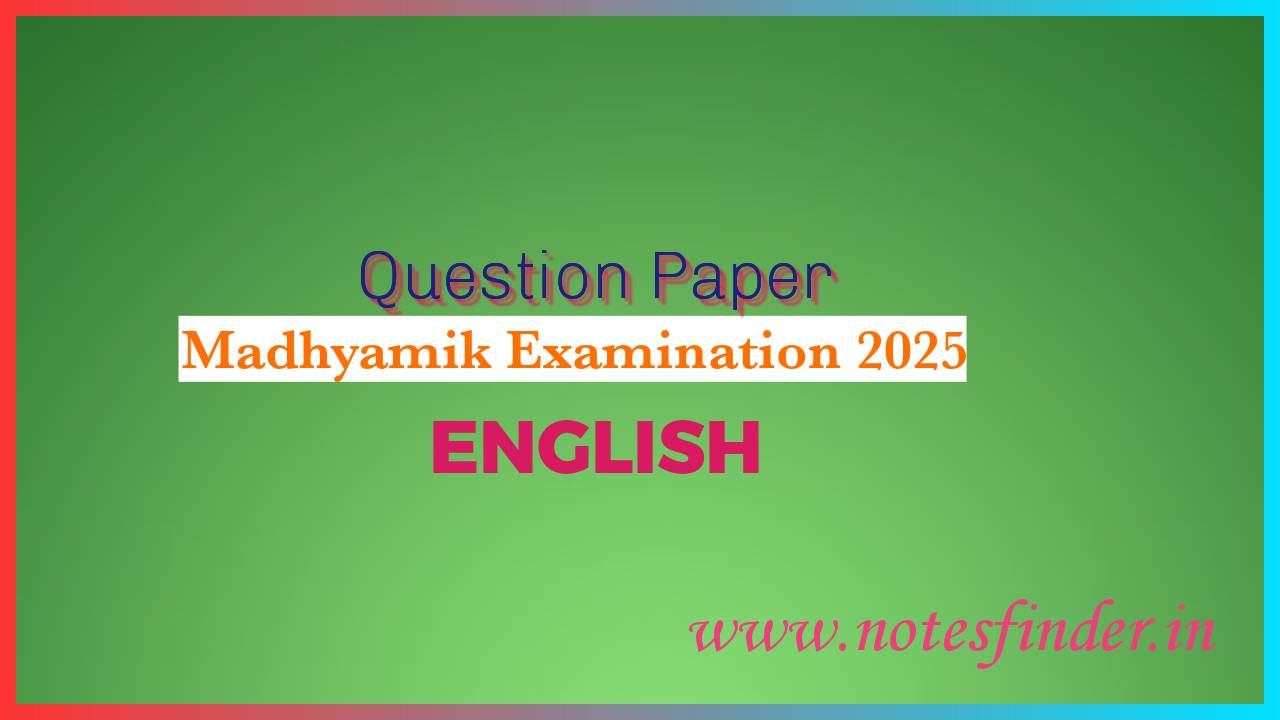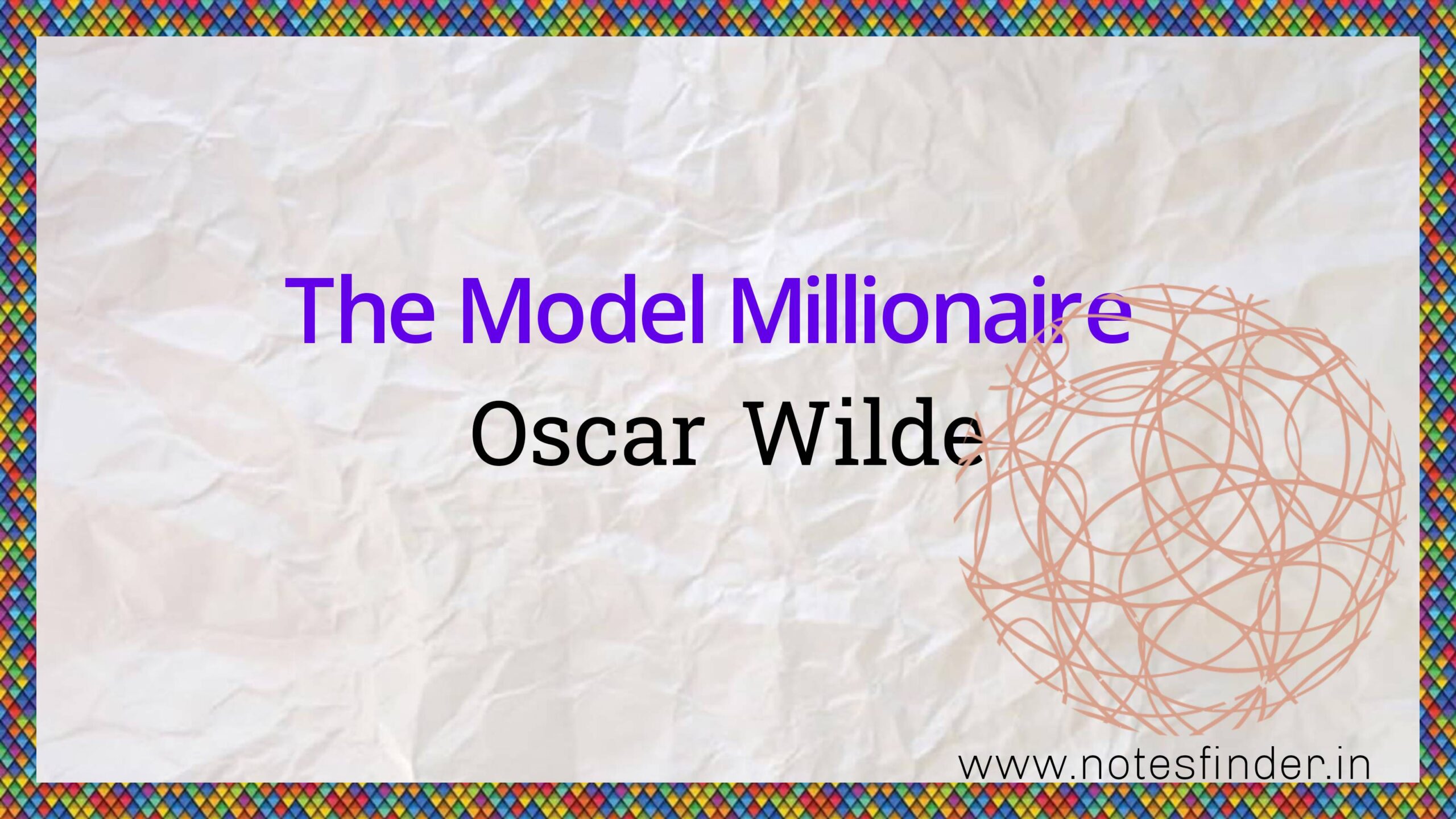1. Sir Mohan is
A. a young man
B. an old man
C. a middle-aged man
D. a Britisher
Answer: C. a middle-aged man
2. Sir Mohan was resting in a
A. first class waiting room
B. second class waiting room
C. inter class waiting room
D. room outside the station
Answer: A. first class waiting room
3. The suit of Sir Mohan is made in
A. India
B. France
C. England
D. Pakistan
Answer: C. England
4. The mirror in the waiting room was made in
A. America
B. England
C. India
D. France
Answer: C. India
5. Sir Mohan smiled at the mirror with
A. an air of scorn
B. an air of pity and patronage
C. extreme vexation
D. an air of admiration
Answer: B. an air of pity and patronage
6. Sir Mohan’s tie was special because
A. it bore the emblem of Balliol collage of Oxford University
B. it was gifted by a British Officer
C. it was a gift from Lachmi
D. it was an emblem of sir Mohan’s excellence in India
Answer: A. it bore the emblem of Balliol collage of Oxford University
7. Sir Mohan believed that the qualities attached to Indian are
A. lazy, corrupt and slow
B. traditional, upper class, luxurious
C. inefficient, dirty, insufficient
D. efficient, worthy of emulation
Answer: C. inefficient, dirty, insufficient
8. ” You are so much like everything else in this country ” this country refers to
A. America
B. India
C. England
D. Ireland
Answer: B. India
9. Sir Mohan used
A. eau de Cologne
B. ayurvedic massage oil
C. cod liver oil
D. Swadeshi sandal wood scented power
Answer: A. eau de Cologne
10. ” Ek chota ” refers to
A. a small glass of water
B. a small glass of milk
C. a small glass of scotch
D. a small gift
Answer: C. a small glass of scotch
11. The word opposite to ” efficient ” is
A. stylish
B. effective
C. inefficient
D. obvious
Answer: C. inefficient
12. Lachmi was sitting on
A. a sofa
B the floor
C. a bench
D. a steel trunk
Answer: D. a steel trunk
13. Lachmi was chewing
A. chocolate
B. sweets
C. gum
D. betel leaf
Answer: D. betel leaf
14. Sir Mohan looked at himself in the mirror of a _____________ waiting room
A. second class
B. inter class
C. first class
D. third class
Answer: C. first class
15. The mirror _____________ back at sir Mohan
A. laughed
B. mocked
C. smiled
D. replied
Answer: C. smiled
16. The bearer went to meet sir Mohan at the waiting room thought a
A. wire gauze door
B. narrow gauze door
C. broad gauze door
D. heavy glass door
Answer: A. wire gauze door
17. The suit of sir Mohan was from_____!
A. Saville Row
B. Oxford University
C. Harley Street
D. France
Answer: A. Saville Row
18. Sir Mohan smoothed his balliol tie for the __________ time.
A. fifteenth
B. sixteenth
C. umpteenth
D. seventeenth
Answer: C. umpteenth
19. Sir Mohan’s moustache was neatly____
A. shaved
B. cut
C. shaped
D. trimmed
Answer: D. trimmed
20. Sir Mohan smiled at the mirror with an air of pity and__________.
A. satisfaction
B. pride
C. patronage
D. perfection
Answer: C. patronage
21. He glanced at his _________
A. tie
B. watch
C. suit
D. moustache
Answer: B. watch
22. _________ ordered Sir Mohan
A. ” Ek chota.”
B.” Koi hail “
C. ” Ek dum jao…”
D. ” Reserved !”
Answer: A. ” Ek chota.”
23. ” Trimmed ” means
A. cut roughly
B. cut neatly
C. shaved
D. made long
Answer: B. cut neatly
24. ” Livery ” means
A. look
B. vision
C. dress
D. uniform
Answer: C. dress
25. Lady Lal was in her
A. thirties
B. forties
C. mid – forties
D. fifties
Answer: C. mid – forties
26. Lachmi had ____________ gold bangles on her arms
A. one
B. two
C. several
D. five
Answer: C. several
27. Lachmi was
A. tall and fat
B. short and fat
C. tall and lean
D. short and lean
Answer: B. short and fat
28. The colour of the sari that Lachmi wore was
A. red and green
B. red and yellow
C. green and white
D. white with a red border
Answer: D. white with a red border
29. Lachmi’s tiffin carrier was made of
A. silver
B. steel
C. aluminum
D. brass
Answer: D. brass
30. On her way to where the zenana would stop, Lachmi stopped by a
A. hawker’s stall
B. food stall
C. newspaper stall
D. betel leaf stall
Answer: A. hawker’s stall
31. Lachmi stopped by a hawker’s stall to buy
A. chapati
B. pan parag
C. betel leaves
D. mango pickle
Answer: C. betel leaves
32. The betel case of Lady Lal was made of
A. gold
B. tin
C. brass
D. silver
Answer: D. silver
33. Sir Mohan Lal always had with him the newspapers –
A. The Statesman
B. The Times
C. The Guardians
D. The Patrika
Answer: B. The Times.
34. Sir Mohan Lal spent in England –
A. Five years
B. Three years
C. Seven years
D. Two years
Answer: A. Five years
35. Sir Mohan Lal studied at –
A. Oxford University
B. London University
C. Leeds University
D. Cambridge University
Answer: A. Oxford University
36. While in England Sir Mohan Lal usually enjoyed dinner at –
A. Piccadilly
B. The Inns of Court
C. University hostel
D. Oxford
Answer: A. Piccadilly.
- ‘Karma’ written by Khushwant Singh is –
a) A short story
b) An essay
c) A play
d) A report
Ans: a) A short story - Sir Mohan Lal owned a –
a) Silver cigarette case
b) Gold cigarette case
c) Steel cigarette case
d) Wooden cigarette case
Ans: b) Gold cigarette case - The particular thing which Mohan Lal put on the time of traveling was –
a) Balliol tie
b) Blue pant
c) The suit from Savelle Row
d) Red shirt
Ans: a) Balliol tie - Lachmi’s tiffin contained –
a) Bread and butter
b) Chapattis and mango
c) Chapattis and mango pickle
d) Milk and biscuits
Ans: c) Chapattis and mango pickle - Sir Mohan Lal was man-handled and flung out of his first-class coupe by –
a) Two English Soldiers
b) Three English Soldiers
c) Four English Soldiers
d) Five English Soldiers
Ans: a) Two English Soldiers - “You are so very much like everything else in this country…….” –who is referred to here? –
a) Sir Mohan Lal
b) Lady Lal
c) The mirror of the first-class waiting room
d) The Englishman
Ans: c) The mirror of the first-class waiting room - ‘Ek chota’ –What is meant here? –
a) A betel leaf
b) A hard drink
c) A cigarette
d) A soft drink
Ans: d) A soft drink - The inter-class zenana compartment was-
a) Next to the guard’s van
b) In the middle of the platform
c) Just after the engine
d) At the tail end of the train
Ans: d) At the tail end of the train - The story starts with –
a) Lady Lal traveling in a train
b) Lachmi sitting on a trunk at the station
c) Mohan Lal looking at himself in a mirror
d) Sir Mohan Lal
Ans: c) Mohan Lal looking at himself in a mirror - “You are a bit of all right, old chap” –This is spoken by –
a) Lachmi
b) A British soldier
c) The narrator
d) Sir Mohan Lal
Ans: d) Sir Mohan Lal - Mohan Lal’s suit was brought from –
a) Saville Row
b) Paris
c) America
d) London
Ans: a) Saville Row - “There was still time for a quick one.” –Here ‘a quick one’ means –
a) Smoking
b) Eating food
c) Chewing betels
d) Drinking wine
Ans: d) Drinking wine - Lachmi or Lady Mohal Lal sat on –
a) Cushion
b) Steel trunk at the railway station
c) Platform chair
d) Bench
Ans: b) Steel trunk at the railway station - Mohan Lal’s wife was traveling in the –
a) First class
b) Second class
c) Economic class
d) Inter-class
Ans: d) Inter-class - Who brought Lachmi’s belongings to the compartment of the train? –
a) An attendant
b) Her brother
c) A coolie
d) Sir Mohan Lal
Ans: c) A coolie - What was Sir Mohan Lal? –
a) Trader
b) A teacher
c) Soldier
d) A barrister
Ans: d) A barrister - Lachmi was not allowed to travel with Sir Mohan Lal in the first-class because –
a) She was only a native woman
b) She was ugly to look at
c) She was in the habit of chewing betel leaves
d) She was not liked by Sir Mohan Lal
Ans: a) She was only a native woman - What were Sir Mohan Lal’s plans to strike up a conversation with fellow travelers during the train journey? –
a) Sir Mohan Lal decided to talk about the weather loudly.
b) Sir Mohan Lal decided to display the times in such a way that it was visible to others while he worked on the crossword puzzle.
c) Sir Mohan Lal decided to ‘lend his copy of the times newspaper to anyone who wanted it and then begin a loud conversation.
d) Sir Mohan Lal decided to quiz his fellow travelers about their native place in anglicized Hindustani.
Ans: b) Sir Mohan Lal decided to display the times in such a way that it was visible to others while he worked on the crossword puzzle. - Which act of the British soldiers finally angers Sir Mohan Lal? –
a) Sir Mohan Lal was outraged by their refusal to read the times.
b) Sir Mohan lal was outraged by their speaking to him in broken Hindustani.
c) Sir Mohan Lal was outraged by their throwing out of his suitcase and other belongings on the platform.
d) Sir Mohan Lal was outraged by their ignorance of his Balliol tie.
Ans: c) Sir Mohan Lal was outraged by their throwing out of his suitcase and other belongings on the platform. - Where does Sir Mohan Lal look at himself in the mirror? –
a) Sir Mohan Lal looks at himself in the mirror in the ground floor of his bungalow.
b) Sir Mohan Lal looks at himself in the mirror in a first-class waiting room at the railway station.
c) Sir Mohan Lal looks at himself in the mirror in his room at Balliol College, Oxford.
d) Sir Mohan Lal looks at himself in the mirror in the upper storey of his bungalow.
Ans: b) Sir Mohan Lal looks at himself in the mirror in a first-class waiting room at the railway station. - Why are Sir Mohan Lal and Lady Lal not traveling together even though they are booked in the same train? –
a) Men and women were not allowed to travel together in olden days.
b) Sir Mohan Lal likes to travel first-class and Lady Lal prefers the inter-class.
c) Sir Mohan Lal likes to travel inter-class and Lady Lal prefers the first-class.
d) There are no tickets available in the same compartment.
Ans: b) Sir Mohan Lal likes to travel first-class and lady Lal prefers the inter-class. - How do Sir Mohan Lal and Lady Lal live at home? –
a) Sir Mohan Lal stays in the upper storey of the house while Lady Lal is on the ground floor.
b) Lady Lal lives in the servants’ quarters next door.
c) Sir Mohan Lal and Lady Lal live together in perfect accord on the same floor.
d) Lady Lal stays in the upper storey of the house while Sir Mohan Lal lives on the ground floor.
Ans: d) Lady Lal stays in the upper storey of the house while Sir Mohan Lal lives on the ground floor. - The arrival of the train did not disturb Sir Mohan Lal’s –
a) Sleep
b) Anxiety
c) Composure
d) Sanguineness
Ans: d) Sanguineness - Lachmi stopped by a hawker’s stall to buy –
a) Chapati
b) Betel leaves
c) Pan Parag
d) Mango pickle
Ans: b) Betel leaves - Sir Mohan Lal’s ways and manners were to produce the impression –
a) That he was an English gentleman
b) That he was as anglicized and refined as an English gentleman
c) That he belonged to Indian nobility
d) That he was not an Indian nobleman
Ans: b) That he was as anglicized and refined as an English gentleman - Sir Mohan Lal believed that qualities attached to ‘Indian’ were –
a) Lazy, corrupt, slow
b) Traditional, upper class, luxurious
c) Inefficient, dirty, indifferent
d) Efficient, worthy of emulation
Ans: c) Inefficient, dirty, indifferent - The words “get the nigger out” suggest –
a) A sense of irony
b) A sense of force
c) A sense of humor
d) A sense of tragedy
Ans: a) A sense of irony - When Sir Mohan Lal saw two Englishmen soldiers walking towards his coupe he decided to –
a) Shoot them out
b) Welcome them warmly
c) Vent his anger on them
d) Ignore them with an expressionless matter-of-factness
Ans: b) Welcome them warmly - The arrival of the train did not disturb Sir Mohan Lal’s –
a) Peace
b) Understanding
c) Sang-froid
d) Conversation
Ans: c) Sang-froid - The mirror in the first class compartment was –
a) Very neat and clean
b) Very dirty
c) Old and not in well condition
d) Broken to pieces
Ans: c) Old and not in well condition - Lachmi had on her nose –
a) A diamond nose-ring
b) A silver nose-ring
c) A gold nose-ring
d) Nothing
Ans: a) A diamond nose-ring - The poor illiterate relatives did not visit the bungalow of Mohan Lal because –
a) They were arrogant
b) They were not liked by Mohan Lal and Lachmi
c) Mr. Lal did not allow them
d) Both Mohan Lal and Lachmi did not like them
Ans: b) They were not liked by Mohan Lal and Lachmi - ‘Zenana’ is the compartment in the train meant for –
a) Male passengers only
b) Female passengers only
c) Both male and female passengers
d) None
Ans: b) Female passengers only - Entering in the ‘Zenana’ Mrs. Lal –
a) Got a seat beside the window towards the platform
b) Got a seat beside the window opposite the platform
c) Got an uncomfortable seat
d) Got a seat in one corner
Ans: a) Got a seat beside the window towards the platform - ‘Tickety-boo’ means –
a) Show the ticket
b) All right
c) Ticket checker
d) Get out
Ans: b) All right - Mr. Mohan Lal always used to read the ‘Times’ because –
a) It attracted the attention of others
b) He did the crossword puzzle
c) He preferred to read it
d) He was a permanent subscriber to the Times
Ans: d) He was a permanent subscriber to the Times - On that day Sir Mohan Lal had read the Times –
a) Once
b) Several times
c) Thrice
d) None of these
Ans: b) Several times - The mirror in the first-class waiting is made in –
a) England
b) India
c) Japan
d) France
Ans: b) India - Lachmi was chewing –
a) Gum
b) Sweets
c) Betel leaf
d) Chocolate
Ans: c) Betel leaf - Lachmi was –
a) Tall and fat
b) Short and lean
c) Tall and thin
d) Short and fat
Ans: d) Short and fat - ‘Mixed double’ refers to Mohan’s playing –
a) Cricket
b) Football
c) Tennis
d) Ha-do-do
Ans: c) Tennis - Sir Mohan’s cigarette case was made of –
a) Silver
b) Steel
c) Brass
d) Gold
Ans: d) Gold - On seeing the compartment without any passenger Sir Mohan Lal was –
a) Satisfied
b) Sad
c) Glad
d) Indifferent
Ans: b) Sad - The names of soldiers were –
a) Bill and Jim
b) Tom and Keats
c) Bill and Tom
d) Jack and John
Ans: a) Bill and Jim - When the train was about to reach the platform, Lachmi finished her meal –
a) Slowly
b) Casually
c) Hurriedly
d) None of these
Ans: c) Hurriedly
Read More Leela's Friend - RK Narayan Multiple Choice Questions (MCQ) from Leela's Friend Short Answer Questions (SAQ) from Leela's Friend Long Answer Questions (LAQ) from Leela's Friend Karma - Khushwant Singh Multiple Choice Questions (MCQ) from Karma Short Answer Questions (SAQ) from Karma Long Answer Questions (LAQ) from Karma Jimmy Valentine - O. Henry Multiple Choice Questions (MCQ) from Jimmy Valentine Short Answer Questions (SAQ) from Jimmy Valentine Long Answer Questions (LAQ) from Jimmy Valentine Nobel Lecture - Mother Teresa Multiple Choice Questions (MCQ) from Nobel Lecture Short Answer Questions (SAQ) from Nobel Lecture Long Answer Questions (LAQ) from Nobel Lecture The Place of Art in Education - Nandalal Bose Multiple Choice Questions (MCQ) from The Place of Art in Education Short Answer Questions (SAQ) from The Place of Art in Education Long Answer Questions (LAQ) from The Place of Art in Education Composed Upon Westminster Bridge - William Wordsworth Multiple Choice Questions (MCQ) from Composed Upon Westminster Bridge Short Answer Questions (SAQ) from Composed Upon Westminster Bridge Long Answer Questions (LAQ) from Composed Upon Westminster Bridge Meeting at Night - Robert Browning Multiple Choice Questions (MCQ) from Meeting at Night Short Answer Questions (SAQ) from Meeting at Night Long Answer Questions (LAQ) from Meeting at Night The Sick Rose - William Blake Multiple Choice Questions (MCQ) from The Sick Rose Short Answer Questions (SAQ) from The Sick Rose Long Answer Questions (LAQ) from The Sick Rose Brotherhood - Octavio Paz Multiple Choice Questions (MCQ) from Brotherhood Short Answer Questions (SAQ) from Brotherhood Long Answer Questions (LAQ) from Brotherhood Daybreak - Henry Wadsworth Longfellow Multiple Choice Questions (MCQ) from Daybreak Short Answer Questions (SAQ) from Daybreak Long Answer Questions (LAQ) from Daybreak



